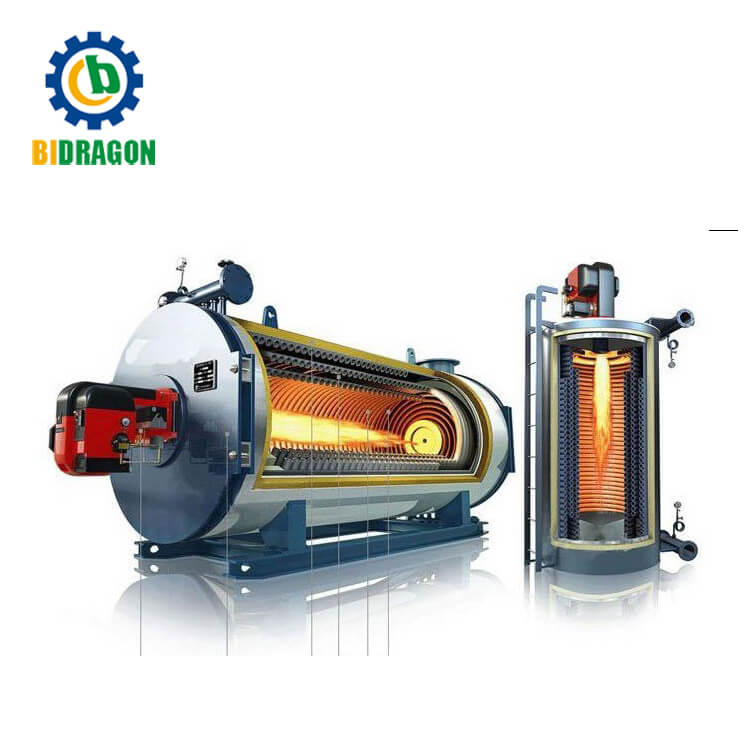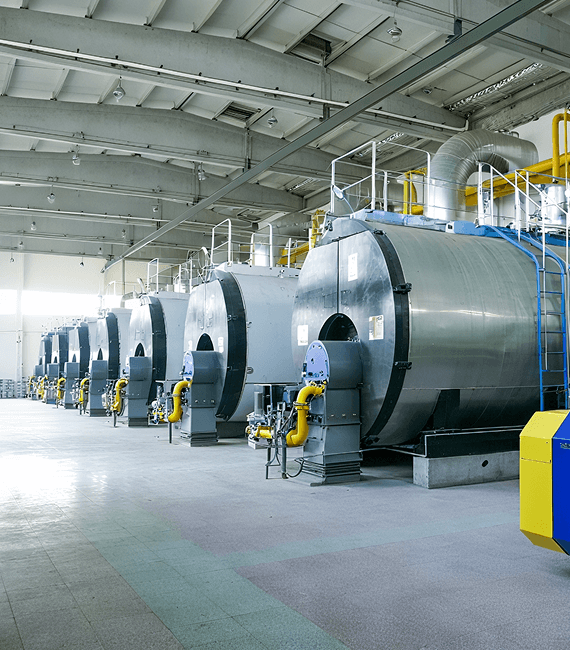A thermal oil boiler fires through a helical coil and generates energy from the hot products of combustion. This, by heating the coil through radiation and convection.
The coil heats the thermal oil or fluid that is pumped through the thermal oil boiler. The thermal oil heats coils in various types of heat users. Unlike a water or steam boiler, this heating process does not heavily pressurize the system.
Thermal oil systems are superior to water boiling systems
A thermal oil boiler is nearly always cheaper to operate and maintain than water boilers. High pressures required to operate water and steam boilers makes them far more hazardous than thermal oil boilers. Other noticeable advantages with thermal oil systems are the lack of corrosion, lime deposits and scale that are common with heated water or steam boilers thus raising the operating costs of a water boiler considerably. Also, thermal oil boilers do not require makeup water or efficiency draining steam traps.
With thermal oil systems, the user is given the capability of high-temperature operation (up to 600F with organic thermal oils and 800F with certain synthetics) at quite low pressures. Due to the low operating pressure and properties of thermal fluids, most heaters are built to ASME Section VIII, Div. 1. A licensed boiler operator is not typically required.



